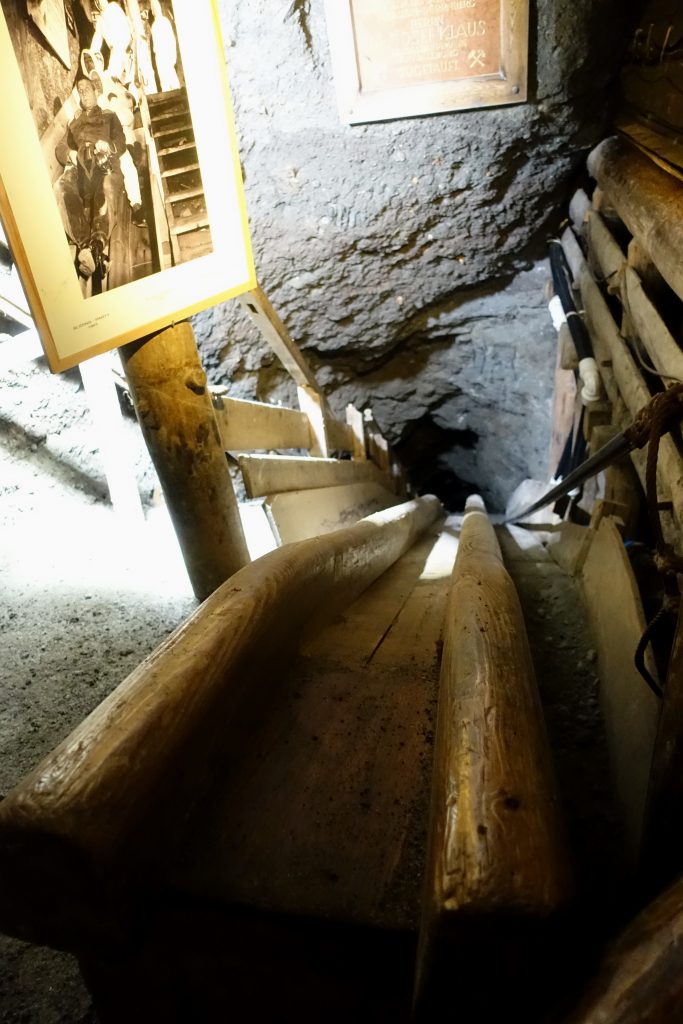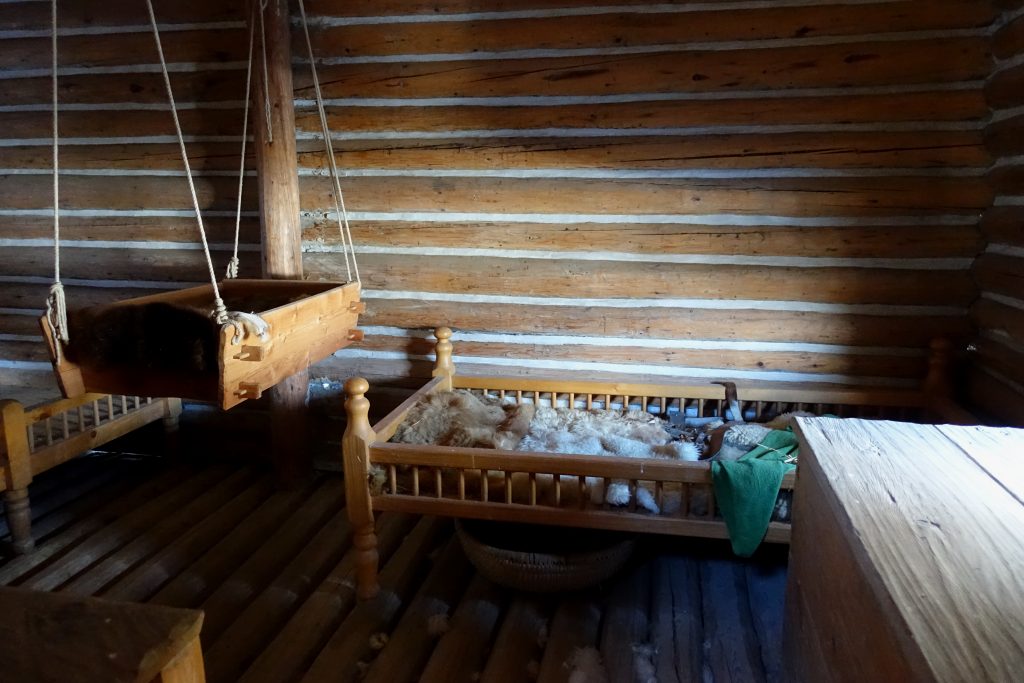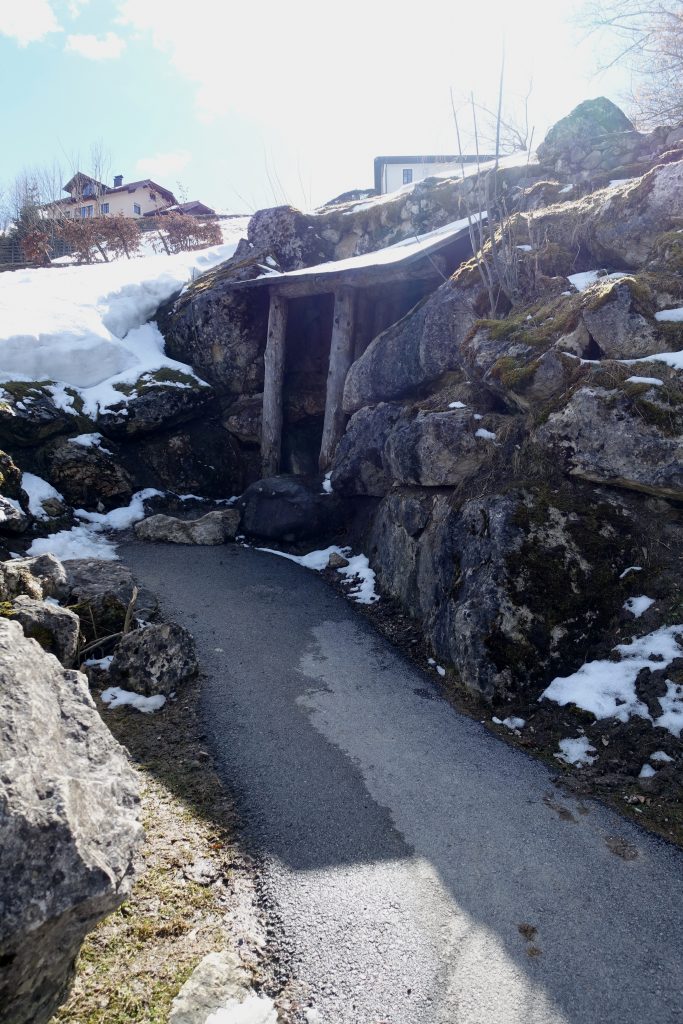A bit of a side story, but to make the connection to beer: Being a biersommelière is all about taste and flavours, about combining beer with food and such, and you can and should apply this knowledge and skill to other eatable and drinkable things as well. One important flavour is salt, but not all salt tastes the same. So to learn more about salt we went to the Salzwelten in Hallein. And don’t worry, there will be some beer in this story at the end.
Glück auf!
I have visited mines before, in Cesky Krumlov, Czech and in Valkenburg, The Netherlands. Both are just that, old mines, a bit fortified, through which you get a tour. Well, ok, in Valkenburg you can also bike through the mines, I suppose that’s a Dutch thing. Hallein was of a totally different level though and they made a whole experience out of it, which is… weird, but it also had enough authentic salty things to make it interesting. If you are in the neighbourhood and are interested in:
- salt
- underground
- mines
- slides (yes, slides)
- cheesy, touristy stuff
you should definitely visit this.

Your tour is guided by a tour guide and supported by a child proof semi-dramatic film of which you’ll see parts in different locations. The film is about the not so nice Fürstbischof Wolf Dietrich von Raitenau who benefited a LOT from the salt mines and built some of the most famous landmarks in Salzburg (It’s a thing, isn’t it though, greedy mine owners?). You enter the mines by a train, that has been used for visitors of the mines ever since the mines were opened for just visiting, and that has been for some time. In July 1989, active salt mining on the Dürrnberg officially came to an end after 800 years of operation. During this time, the Dürrnberg produced around 45 million m³ of brine and some 12 million tons of salt. There is still a lot of salt in the walls and you can taste the brine at one point.
The celts used to hack at the stone to gain salt, in later times the Salzburgers flooded the rooms to extract the salt by water.
You descend twice by a slide. These were new, but the use of a slide was apparently authentic in those mines. Seems legit, like a very fast (although burning) way into the mines. But I assume they came back up with mine trains and carts with all the salt? In the meantime the tour guide can tell you a lot about the salt and salt mines themselves,but you have to ask if you want to know more specific things than just the dramatic side story. Twice you cross the border to and from Germany. At one point you find a body caught in a slide and very well preserved by all the salt.
The most cheesy part in the tour though is the flight over what we like to call the Styx to Hades. With a boat you cross an underground lake, which is quite nice, but they dressed it up with music, lights and a giant rock of salt to sail towards to… It’s… well… it’s… It wasn’t necessary. The tour would have been perfectly fine without it. It was still fun though. What was also quite disconcerting was the escalator at the end. But I guess it was for the best, I know I wouldn’t have managed all those steps in my current condition. We didn’t actually taste a lot of salt, but learned some about salt mining, which was nice.
The Salt world in Hallein consists of two parts: The Kelten village and the mines and we visited the village beforehand. The Kelten village should be a reconstructed village, but it looks a wee bit too modern to me. Still, I only have our own Prehistorisch Dorp as a reference point, maybe the Kelts did use a more modern approach to building? It still gives a bit of an inside into the lives of the Kelts. Around 2600 years ago, Celts settled the Dürrnberg, exploiting the rich salt deposits there for their own benefit. It provided the foundation for their existence, securing them many years of work and prosperity.
And of course, they offer: Keltenbier! A very clear pilsner that’s basically just carbonated water, but it was refreshing. And looking at how touristy the Salzwelten is, it’s probably the best choice, but still I wonder if they couldn’t have done something a bit more interesting. Maybe a bit more salty, like a gose?
What beer do you think would fit this mines and celtic village best?












